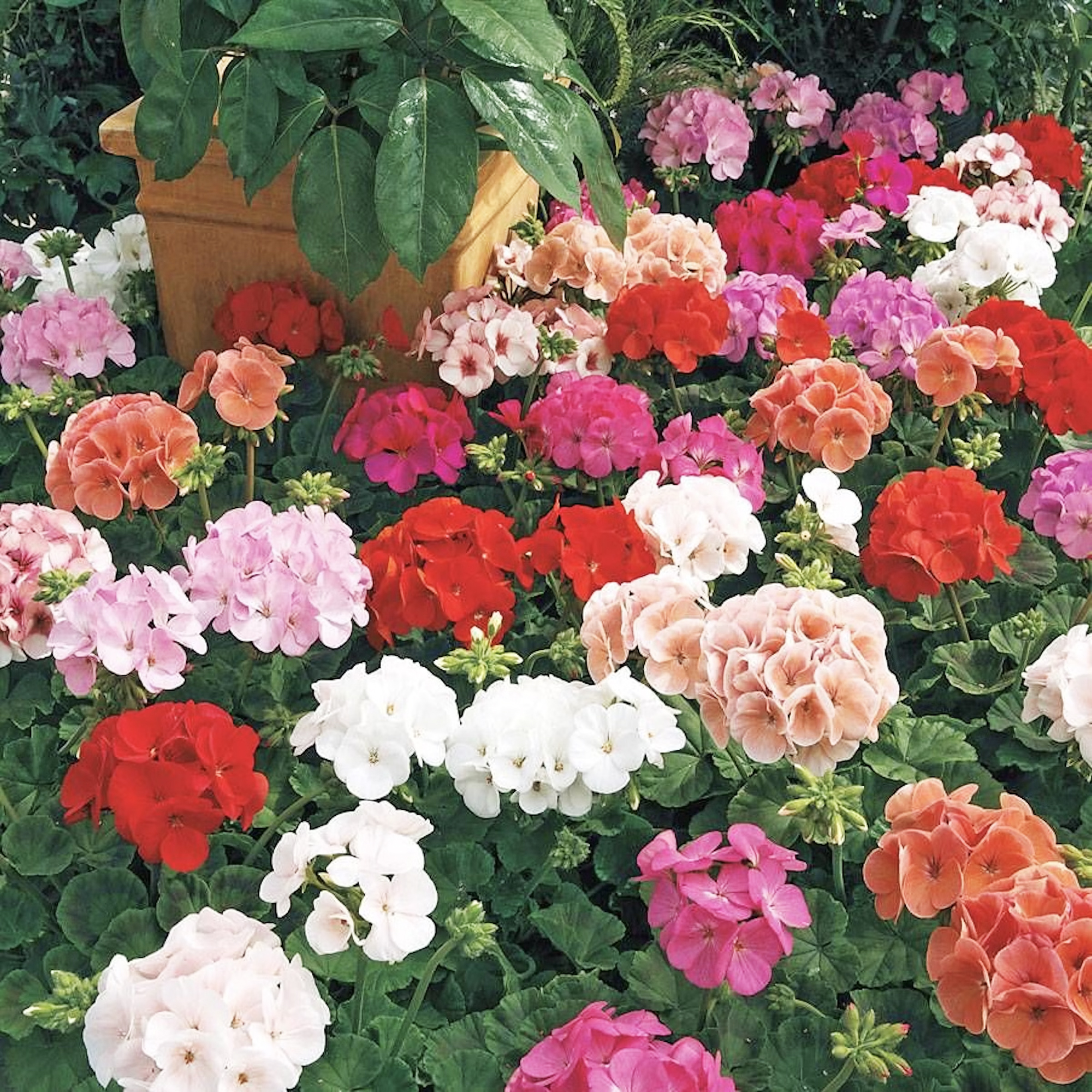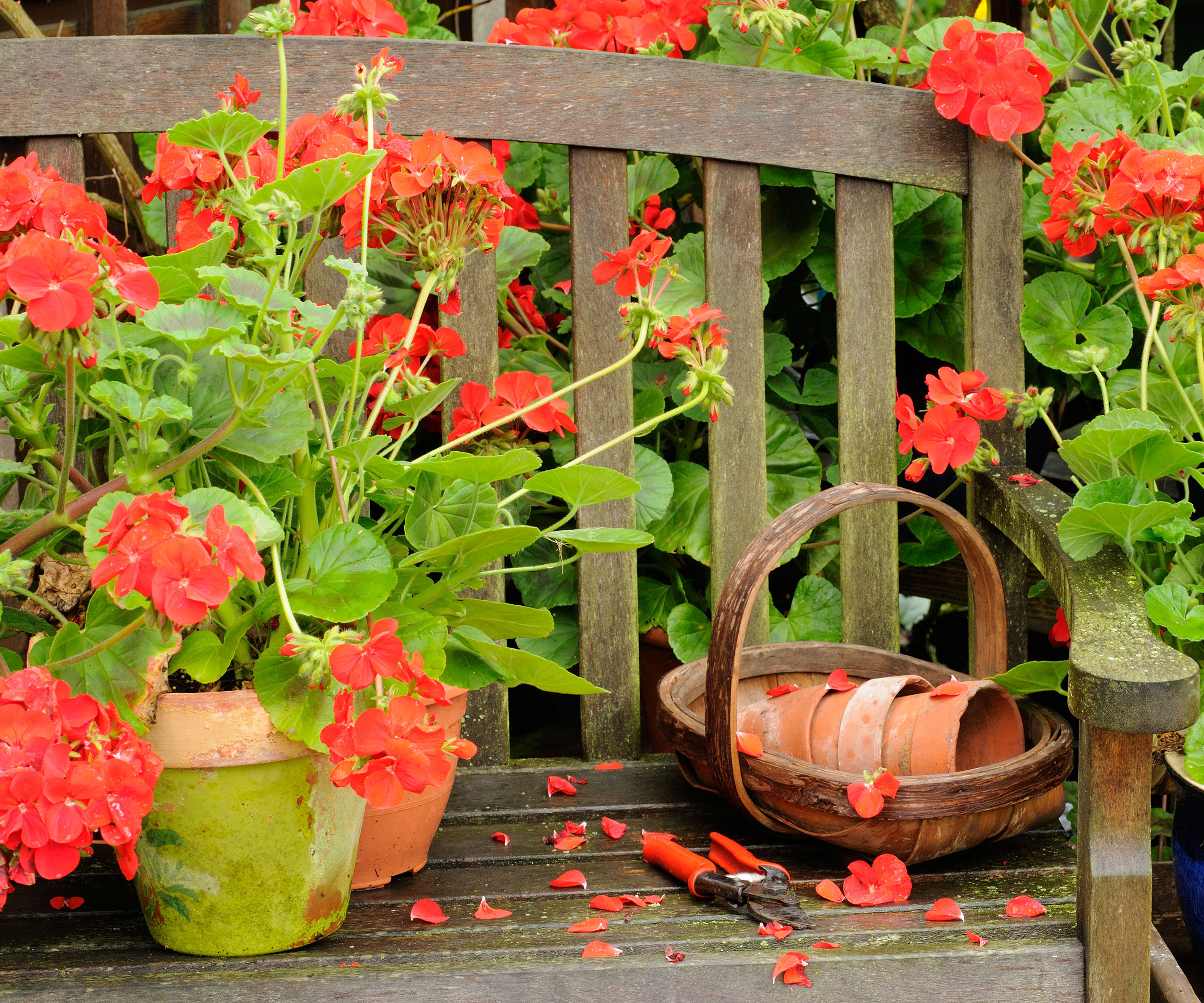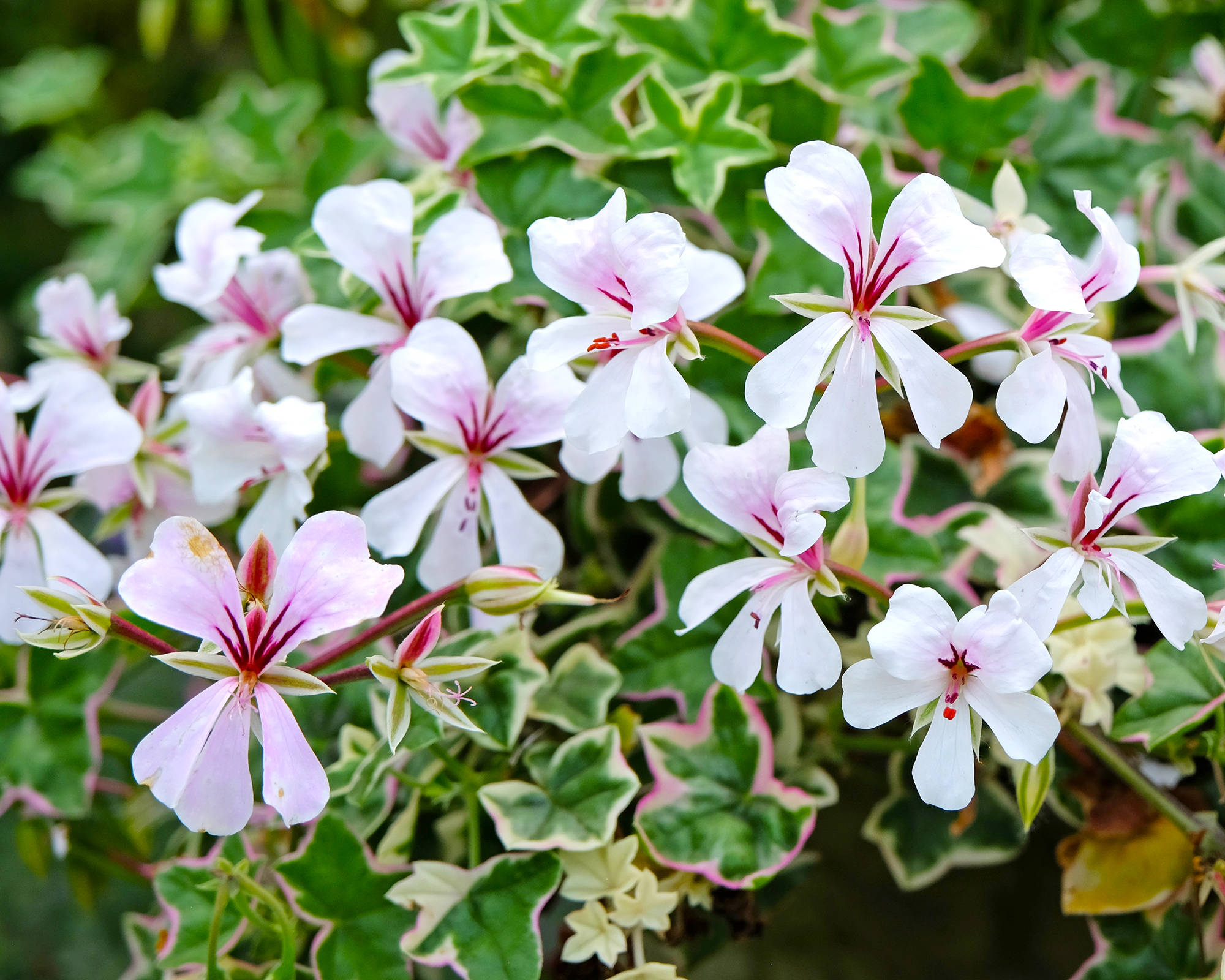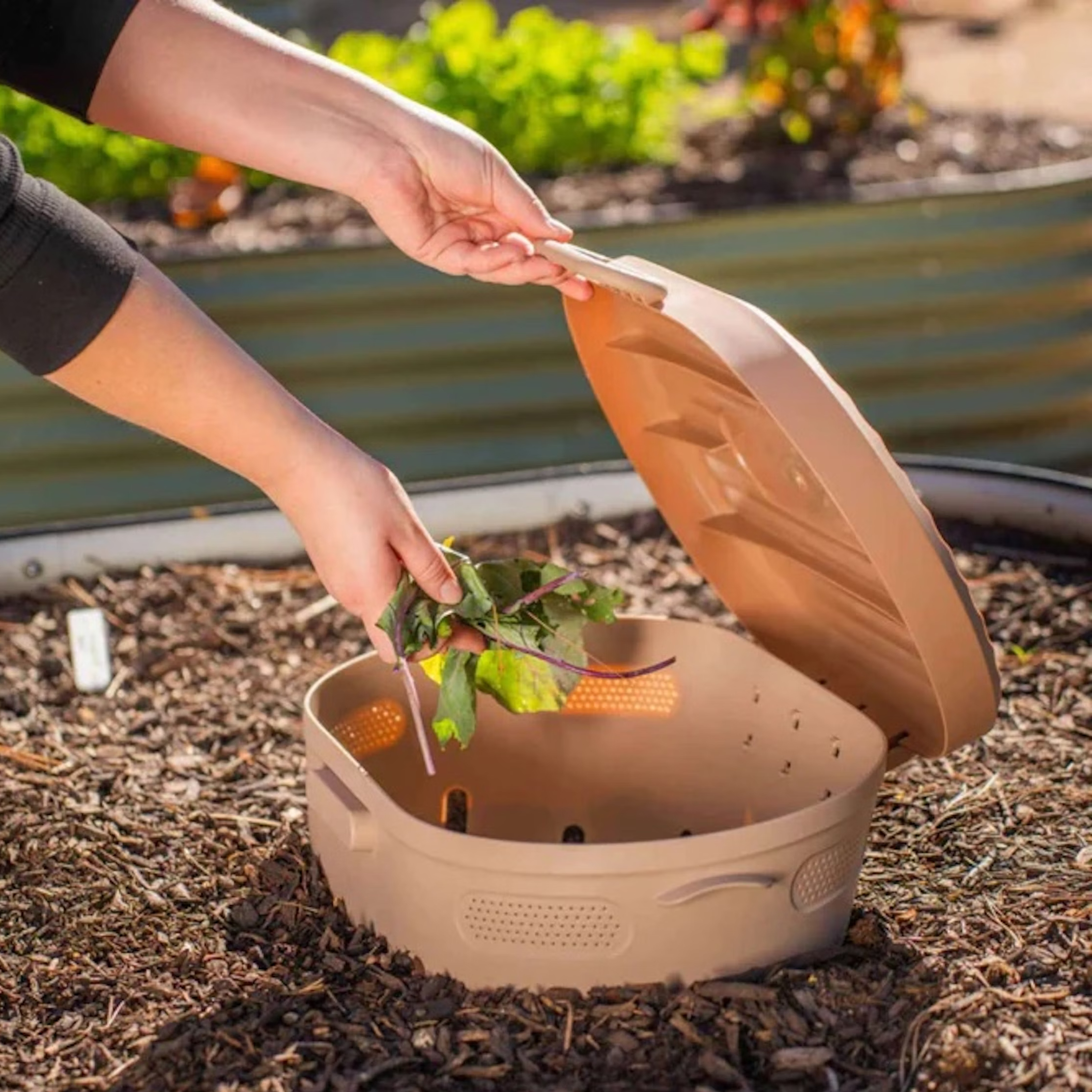How To Keep Geraniums Blooming All Summer – And Through Fall
Keep your geraniums, or pelargoniums, flowering constantly throughout the growing season with our simple tips for extending their glorious summer show.


Geraniums – or pelargoniums – are those rare flowers that can bloom in three seasons in the right circumstances, budding in late spring and delighting gardeners all the way through summer and into fall. However, there are a few essential steps to keep geraniums blooming for this long.
Prized for their vibrant, pretty flowers, geraniums are popular additions to borders, patios, hanging baskets, and window boxes. Growing geraniums indoors is also possible in a conservatory or other bright room.
Usually grown as annuals, geraniums are perennials in USDA hardiness zones 10 and 11, and in cooler regions can be overwintered indoors. This makes growing geraniums in containers an ideal solution that offers the best of both worlds.
You can propagate geraniums from cuttings taken in early summer, or grow geraniums from seed, for an everlasting supply of plants.
Follow our top tips and you can enjoy a constant show of glorious flowers until late in the year.

1. Choose The Right Variety
There are a few geranium varieties to choose from, each differing in their bloom times. The four main options are:
- Zonal geraniums (Pelargonium hortorum) are named for the different color zones in their leaves. Flowers may be white, pink, salmon, or red.
- Ivy geraniums (Pelargonium peltatum) have trailing leaves and semi-double flowers in colors from white to red, and many pastel shades.
- Scented geraniums are available in multiple varieties and have enticing aromas, ranging from apples, to citrus, to roses, and even mint. Flowers are usually smaller than other geraniums.
- Regal, or Martha Washington geraniums (Pelargonium domesticum) are trailing plants with ruffled leaves. Flowers come in shades of red and purple including bright pink, burgundy, lavender, and bicolors. They are a good choice for growing indoors.
Zonal geraniums and ivy geraniums are the best choices for extended blooming times. However, you can follow these tips to prolong the life of other varieties.
Gardening tips, videos, info and more delivered right to your inbox!
Sign up for the Gardening Know How newsletter today and receive a free copy of our e-book "How to Grow Delicious Tomatoes".
Bear in mind pelargonium geraniums are a different plant genus to hardy geraniums – or cranesbill – which are among the longest-blooming perennials.

Maverick Mix geranium is the perfect antidote to hot, humid summers. Every plant offers a surprise with its formula mix of colors – spot white, pink, red, lavender, orange, and more.
2. Deadhead Spent Blooms
Remove faded flowers promptly to encourage new blooms and maintain the plant’s appearance. Once plants have flowered, they retarget their energy towards seed production. Deadheading geraniums prevents this and forces the plant to redirect it towards producing more flowers.
Once a week, check over your geraniums for spent flowers. Deadheading should be done when temperatures are cool and plants are dry – ideally in the morning or evening, to avoid the height of the summer heat.
Hold the faded flower, and snip the stem back to the closest set of healthy leaves. Remove the plant material to avoid transference of disease.
3. Give Plants More Sun
While they will tolerate some shade, geraniums thrive in full sun, needing at least six hours of direct sunlight each day. This is essential to keep plants blooming all season.
When fall approaches and daylight decreases, reposition potted geraniums so they can get as much sunlight as possible.

4. Water Consistently – Deeply
Consistent watering is key to encouraging geraniums to keep blooming. But, don’t overdo it as overwatering can lead to root rot. Geraniums prefer soil to be a little on the dry side, and well-draining.
Check the soil moisture regularly, and water when the top 1-2 inches (2.5-5cm) feels dry. In hot weather, potted geraniums may need daily watering.
When you water, do it deeply. This will encourage plants to grow deeper roots, making them better able to withstand drought.
Mulching geraniums will enable the soil to retain more moisture, reducing watering requirements.
5. Fertilize Regularly
Fertilizing geraniums is key to keeping them blooming. Feed them every two weeks throughout the growing season with a balanced liquid fertilizer to provide vital nutrients.
As fall approaches, you can switch to a fertilizer with a higher potassium content to encourage blooming over foliage growth.
Reduce fertilizing to once a month after the summer has finished.

6. Keep Pests In Check
Keep an eye out for common garden pests, like aphids, spider mites, and whiteflies. They can impact the health and performance of plants, like geraniums, and reduce flowering rates.
Regularly inspect the undersides of leaves and use neem oil or insecticidal soap to treat any infestations.
7. Protect Geraniums From Cold Snaps
While geraniums can keep blooming through the fall, they are not frost-hardy. Even a light frost can damage the plants.
As autumn brings cooler nights, move potted plants to a more sheltered location overnight, or cover plants in borders with a frost cloth.
Fall is a good time to bring geraniums indoors for overwintering, so you can continue to enjoy their fabulous blooms until winter arrives.

Melanie is an experienced gardener and has worked in homes and gardens media for over 20 years. She previously served as Editor on Period Living magazine, and worked for Homes & Gardens, Gardening Etc, Real Homes, and Homebuilding & Renovating. Melanie has spent the last few years transforming her own garden, which is constantly evolving as a work in progress. She is also a passionate organic home grower, having experimented with almost every type of vegetable at some point. In her home, Melanie tends to an extensive houseplant collection and is particularly fond of orchids.
-
 Try The Trend – Turn Any Bed Into A Keyhole Garden With This Clever In-Ground Composter
Try The Trend – Turn Any Bed Into A Keyhole Garden With This Clever In-Ground ComposterKeyhole gardening is an efficient and sustainable practice that saves space. Get started on this DIY project quickly and easily with an in-ground composter.
By Bonnie L. Grant
-
 4 Superfast Composting Methods: Turn Waste Into Garden Gold In 30 Days Or Less
4 Superfast Composting Methods: Turn Waste Into Garden Gold In 30 Days Or LessTry the fastest composting methods to turbocharge your pile and transform kitchen scraps and garden waste into finished compost in just a few weeks.
By Mary Ellen Ellis